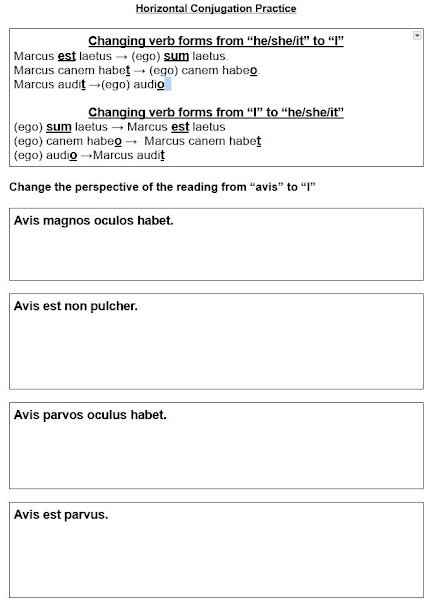A question which CI/ADI teachers often get asked is, "So what about grammar? If you do not explicitly teach grammar, then how do you get your students to learn it?" My answer has always been, "We do indeed teach grammar - it just looks different." Many times I have relied on grammar timeouts in class - drawing attention to a specific grammar point which has come up for about 15-20 seconds and then returning to back to what we were doing. In many ways, that is enough. However, sometimes students need more than that, but I have never realized how to go beyond grammar timeouts without "going all grammar" (and believe me, I LOVE grammar, so I could go on and on about the grammar point). Recently, I learned from Martina Bex about Horizontal Conjugations, and I am loving this concept!
Rather than rehash Martina's directions, here is a link to her post about horizontal conjugations.
Below is also a video which Martina made on the topic:
- I love that students are conjugating verbs without really "conjugating" like I learned to do it! As much as I love doing conjugation charts, since they are novice language learners, students do not need to know how verbs are fully formed, from what conjugation they are, what stem-vowels are, what irregular forms of which to be aware when conjugating, etc. However, they do need to start paying attention to the verb endings.
- I really like the communicative aspect of this. Horizontal conjugations take place in a given context of a reading, instead of an isolated verb chart.
- Because I am using sentences from the reading with which they are familiar, students are re-reading understood content and gaining more input.
- I am looking forward to doing this with verb tense changes.
- Since Latin is an inflected language, I am wondering how to apply this to noun endings and use this as a horizontal declension?


As for pronouns, you could make students write sentences from a different character's point of view.
ReplyDeleteMarcus fratrem semper pulsat - Frater dicit: tu me semper pulsas!
From accusative to nominative and vice versa, you can transform active into passive sentences and back and practice passive conjugation (and ablative of agent) along the way.
From nominative and accusative into dative and nominative, do possession with habere vs. dative of possessor.